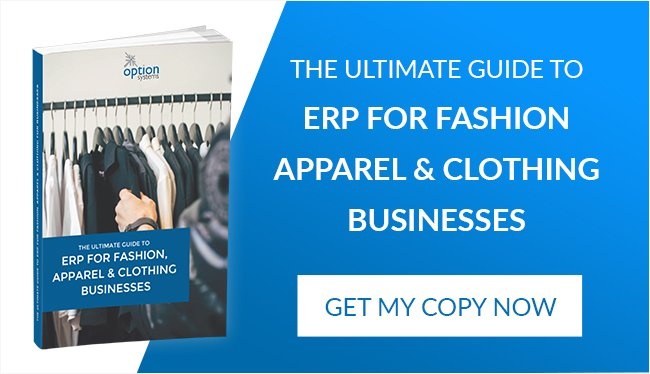
An ERP for the fashion industry is the engine that drives productivity and customer satisfaction, optimising and integrating everyday business activities such as procurement, accounting, sales ledger, and supply chain management. By drawing on real-time, accurate data from different channels and departments across the apparel or footwear business, enterprise resource management software can improve your organisation’s ability to forecast, plan, budget, and report your financial outcomes.
Like most software, apparel ERP systems can become out of date, the consequences of which should never be ignored. Business growth in the competitive apparel and footwear industry depends on high levels of productivity, exciting and innovative product lines, and customer satisfaction that helps to establish brand loyalty. If your apparel ERP software lags behind that of your competitors, your business risks falling out of favour with your target consumers.
The key signs your apparel ERP needs to be upgraded
So, what are the three most important signs that your ERP system needs to be updated?
1) Your ERP system has reached the end of its life
When computer software and systems are released, they are rarely intended to be the finished article. Constant improvements, modifications, and revisions are released by the developer as patches or upgrades, adding new features to the product or closing unforeseen loopholes that cybercriminals can exploit to their gain.
However, all software reaches an end date when the developer will no longer provide updates or patches. If your ERP system still functions seamlessly with no apparent problems, you may be tempted not to invest in a brand new version. However, this could mean that your software lacks the tools necessary to keep your apparel business competitive, or becomes vulnerable to security flaws. And, if technical problems do occur, you’re unlikely to find a supportive voice on the developer’s support line.
2) Your apparel ERP lacks industry-standard features
The competitiveness of the fashion industry means every brand needs to stay one step ahead to build and sustain customer loyalty. To optimise everyday operations, your ERP should enable you to integrate your business channels and make informed management decisions based on real-time data. For example, the ability to access data remotely is crucial in a world in which remote working is on the increase, or you need to make instant decisions in meetings with clients.
By upgrading your ERP to include the latest features, you can be more confident that you’ll be able to manage your business more efficiently and grow your profits quickly as you expand into new markets.
3) Your ERP has poor integration
ERP software works most effectively when it integrates smoothly with existing applications, such as front-end eCommerce, Customer Relationship Management (CRM), analytics, or databases that are the workhorses of your business. For ERP to be successful, it should work seamlessly with these systems, rather than operating in isolation at the risk of becoming a white elephant.
Upgrade to STYLEman ERP now
Upgrading your apparel ERP should be a priority, especially as post-Brexit trade agreements are likely to change the face of international business in Europe and beyond. STYLEman ERP can optimise the essential processes of your business, improving communication, increasing transparency, and enabling you to drive your company’s growth. For a free demonstration of STYLEman ERP, arrange it here.

Image source: pxhere

